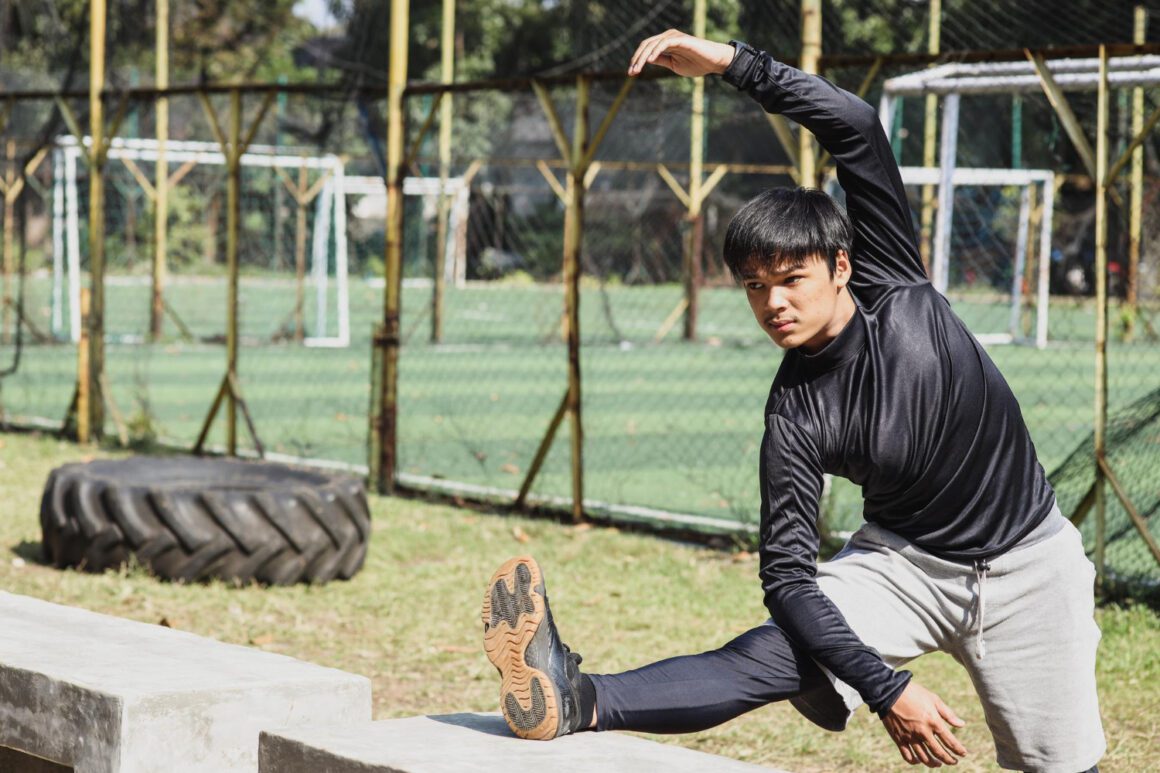Table of Contents Show
✍️ AI is summarizing:
Many runners often find themselves caught between two extremes: the overly complicated warm-up that requires too much time and energy and the simple approach of just starting to run slowly. However, there is a balanced method that can effectively prepare your body for the demands of running, especially when speed and distance are on the agenda. A proper running warm-up routine is essential for a successful run.
Related post:
- Fuel Your Run Smarter: A Guide to Effective Race Fuel Alternatives
- Strengthen Your Mind-Body Connection for Outdoor Adventure
- Experience the Best of Vietnam Travel for Indians
The importance of a proper running warm-up routine

A proper warm-up is not just about getting warmer; it’s a multi-dimensional process that primes your body for physical activity. A well-structured warm-up gradually activates your cardiovascular, nervous, orthopedic, and neuromuscular systems, preparing them for the challenges ahead.
- Cardiovascular System: Warming up increases blood flow to your muscles and nerves, enhancing their performance.
- Nervous System: It boosts the electrical-chemical activation of nerves, facilitating better control over your movements.
- Orthopedic System: Muscles become more flexible and strong, while joints and connective tissues gain hydration, allowing for better shock absorption.
- Neuromuscular System: It primes the nerve and muscle interactions that create effective running patterns, ensuring a smooth and coordinated stride.
A solid running warm-up routine will result in optimum system readiness. This preparation is especially vital for trail and ultra runners, who face varied terrains and distances. A thorough warm-up enhances performance and reduces the risk of injury, allowing you to tackle the challenges of your run with confidence.
Characteristics of an effective running warm-up routine

An effective warm-up should be:
- Running-Specific: Incorporate movements that mimic running to prepare your body adequately.
- Time- and Energy-Sensitive: Strike a balance between a thorough warm-up and the risk of fatigue. The goal is to energize, not exhaust.
- Progressive: Gradually increase the intensity, starting with lighter movements and building up to more vigorous actions.
Rickhi’s four-step running warm-up routine: your guide to success

Here’s a concise four-step routine designed to optimize your running warm-up routine:
Step Zero: Pre-warm-up mobility assessment
Before you engage in your routine, assess your range of motion and movement symmetry. This involves static motions that ensure your body is ready for the dynamic actions of running. Consider performing a few self-assessment tests to identify any mobility deficits that need addressing.
Step 1: Dynamic orthopedic movements
- Objective: Increase overall muscle-tendon-joint mobility.
- Intensity: Low
- Exercises: Include dynamic stretches like knee hugs, side lunges, and arm circles.
- Dosage: Perform three sets of 10 meters or 10-30 seconds for each exercise.
These movements help prepare your body by enhancing flexibility and strength across major muscle groups. To get the best results, make sure that your running warm-up routine includes the following.
Step 2: Dynamic nervous system activation

- Objective: Target the nervous system to improve mobility.
- Intensity: Low
- Exercises: Focus on running-specific movements like toe touches and trunk rotations.
- Dosage: Again, aim for three sets of 10 meters or 10-30 seconds.
These exercises engage the nervous system and help facilitate better movement patterns.
Step 3: Running drills
- Objective: Promote neuromuscular facilitation specific to running.
- Intensity: Medium to high
- Exercises: Incorporate drills such as high knees, butt flicks, and skips.
- Dosage: Complete three sets of 10 meters or 5-10 seconds for each drill.
These drills emphasize components of the running stride, preparing you for full-speed efforts. Strides are a must for any effective running warm-up routine.
Step 4: Strides
- Objective: Execute short, progressive sprints.
- Intensity: Medium to high
- Details: Perform strides lasting no more than 10 seconds.
- Dosage: Complete 3 to 6 strides with 30-60 seconds of walking rest in between.
Strides help you put everything together, reinforcing the mechanics of running at speed without overly taxing your body.
Enhance your running preparation with ExoTrails! Discover optimal warm-up spots along your planned route and track your progress using integrated GPS features, making the most of your running warm-up routine.
Conclusion
This four-step warm-up routine can be completed in as little as 15 minutes, making it both efficient and effective. By incorporating these steps into your pre-run preparation, you’ll enhance your performance, reduce the risk of injury, and ensure that your body is fully ready to take on the challenges of your run. So, bundle up, get moving, and enjoy your time on the trails knowing you have a solid running warm-up routine! Follow our official Facebook page now to receive more interesting information.












